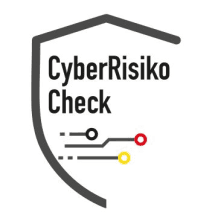Incident Response: A Look into Cyber Security

Share the blog with others
In today's digital world, cybersecurity is more complex than ever. An often-overlooked but crucial area is the incident response process. We would like to take you on a journey through the various phases of this essential process and give you an insight into the topic of incident response.
Why is Incident Response so Important?
A well-thought-out incident response process is not just a luxury, but a necessity. It helps minimize financial and reputational risks and ensures that your company complies with legal regulations.
📊 Cost-Benefit Analysis
Implementing an effective incident response plan is not just a matter of security, but also a financial consideration. A quick and efficient approach to security incidents can significantly reduce costs associated with data loss, downtime, and regulatory penalties. For decision-makers, it is important to understand that the costs of implementing such a plan are often far less than the potential financial losses from a poorly managed security incident.
📋 Phase 1: Strategic Preparation
The first step is to define the strategic objectives and framework. We can help you create a tailored incident response plan and establish a specialized team for implementation. We utilize modern project management and communication tools and create a formalized incident response manual that clearly defines all processes.
🕵️ Phase 2: Early Detection and Reporting
Early detection is crucial to minimize damage. We support you in implementing monitoring systems and ensuring robust protection mechanisms. By utilizing advanced SIEM systems and endpoint protection, we can ensure that all detected anomalies are properly logged.
🚨 The Red Line
At this point, we define clear escalation criteria together with you and set up an automated notification system for critical events.
🛑 Phase 3: Rapid Isolation and Containment
When a security-related incident is detected, prompt and targeted action is critical. We support you immediately to effectively contain the attack. We employ a combination of state-of-the-art security solutions such as Next-Generation Firewalls, Intrusion Detection and Prevention Systems, Endpoint Protection Platforms, Security Information and Event Management (SIEM), vulnerability scanners, and threat intelligence.
🛠️ Phase 4: Root Cause Analysis and Remediation
To fully resolve the incident, a thorough analysis is required. We assist you with forensic investigation and the identification and remediation of security gaps. All findings will be documented in a forensic report and in patch and update logs.
🔄 Phase 5: System Review and Restoration
Before normal operations can resume, the systems must be thoroughly reviewed. We help you validate system integrity and check for compliance. All results will be summarized in recovery and validation reports as well as in compliance reports.
📊 Phase 6: Evaluation and Lessons Learned
Finally, we conduct a post-mortem analysis and revise the incident response plan based on the insights gained. All action items and plans for future improvements will be documented.
✅ Checklist
Check if your company has an incident response plan.
Assemble a dedicated incident response team.
Define clear escalation policies.
Implement real-time monitoring systems.
Conduct regular training and simulations.
Conclusion
In cybersecurity, every second counts. We are here to support you at every step and help elevate your cybersecurity to the next level. Are you ready to take proactive measures? Contact us for a personal consultation.
Stay safe, vigilant, and well-documented!








